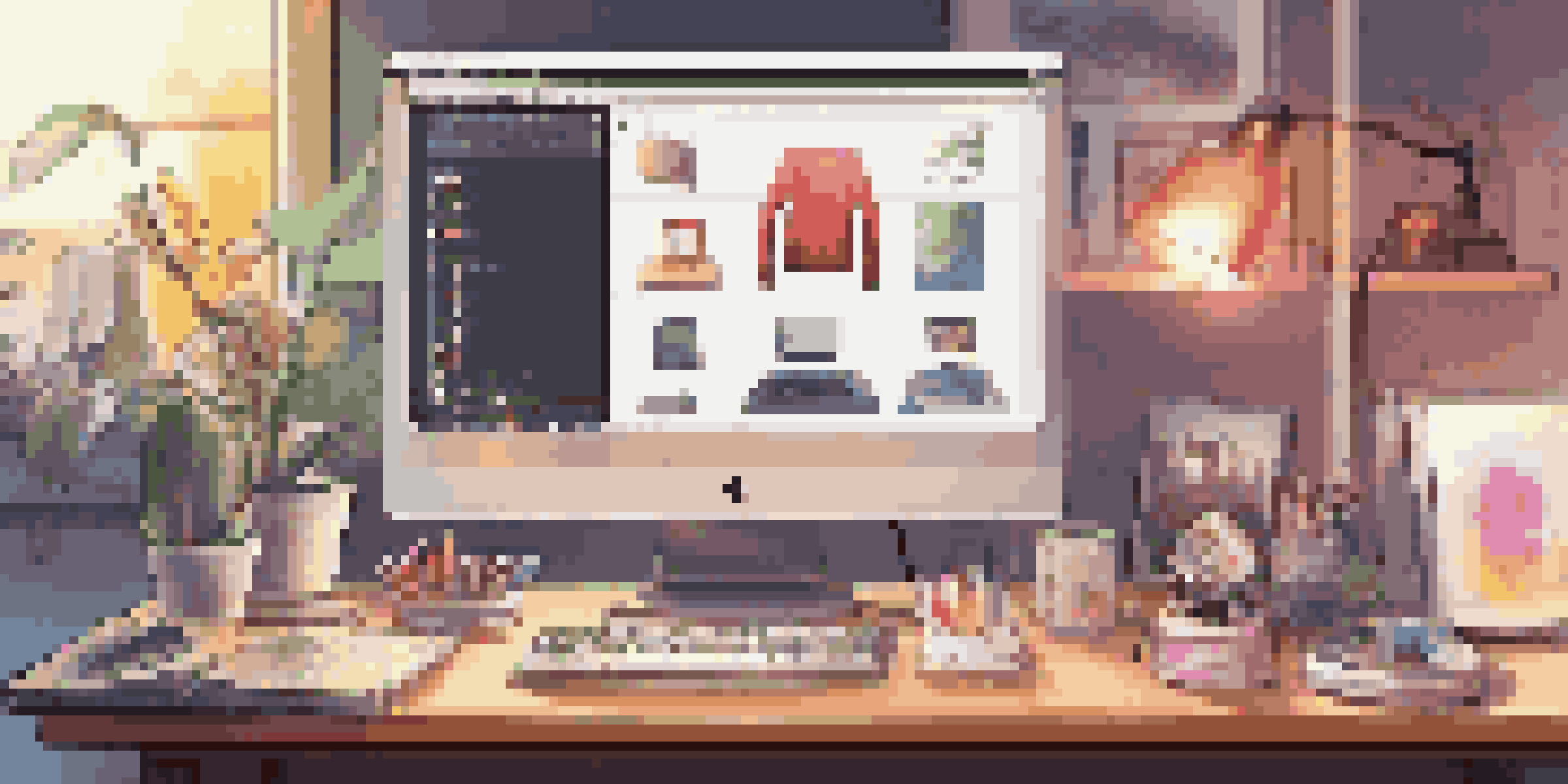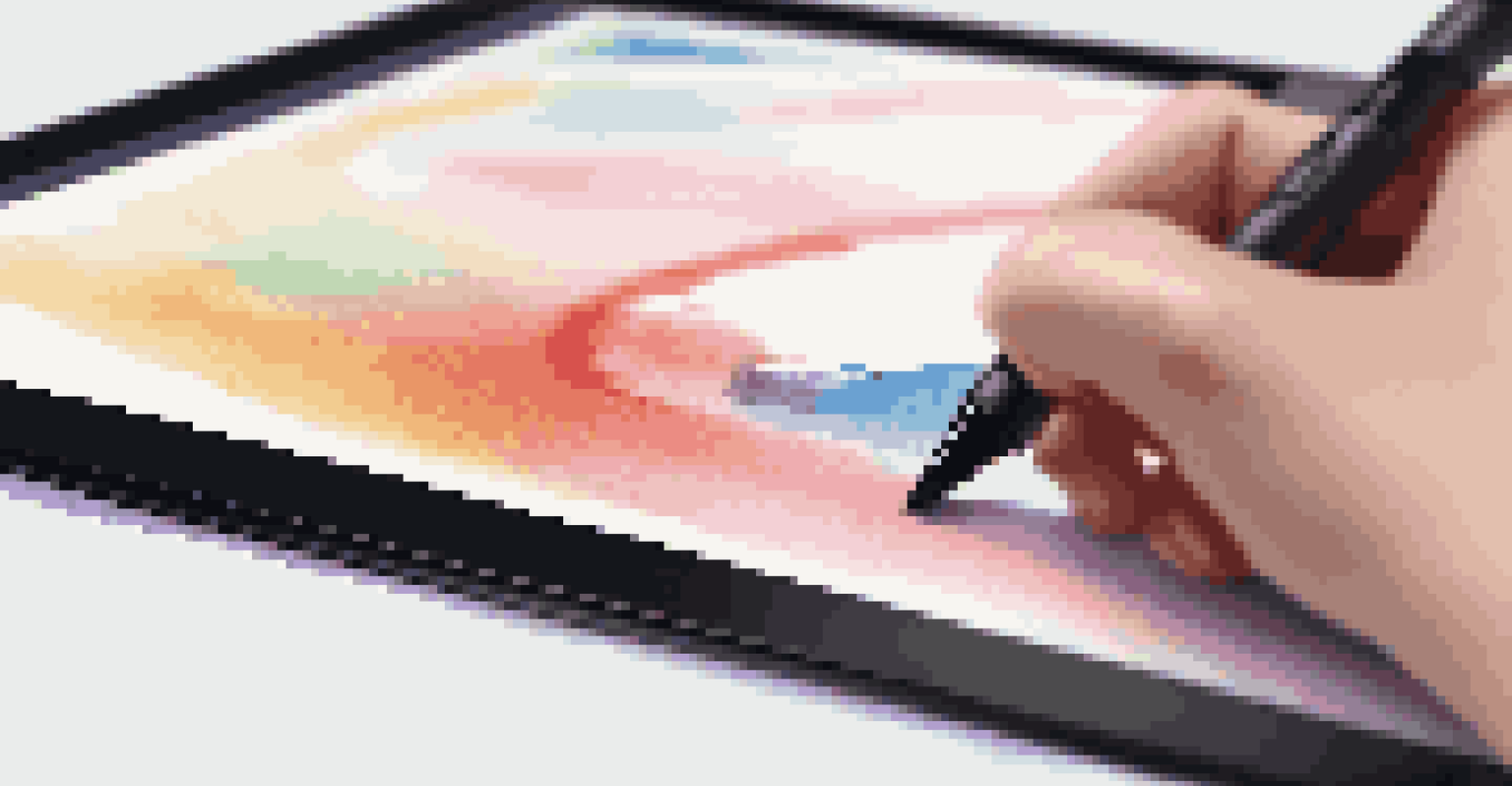Digital Art Tools: A Beginner's Guide to Hardware Options

Understanding Digital Art: What You Need to Get Started
Digital art is an exciting realm where creativity meets technology. For beginners, it can be daunting to figure out what tools are essential for starting their artistic journey. Whether you're interested in drawing, painting, or graphic design, having the right hardware can make all the difference in your experience and output.
Creativity is intelligence having fun.
The primary tools you'll need include a computer or tablet, a drawing tablet, and software for creation. Each of these components plays a critical role in how you express your artistic vision. By understanding these tools, you’ll be well on your way to creating captivating digital artwork.
As you delve into the world of digital art, remember that the tools are just a means to an end. Your creativity, ideas, and practice will ultimately shape your artistic style and skills.
Choosing the Right Computer for Digital Art Creation
When it comes to digital art, the computer you choose can greatly influence your workflow. A powerful machine with a good graphics card will help you run art software smoothly, handle large files, and manage complex projects. It's worth investing in a computer that can keep up with your creative ambitions.

For beginners, a laptop may seem appealing due to its portability, but a desktop computer often offers better performance and upgrade options. It’s essential to consider factors like RAM, storage, and screen quality to ensure a comfortable and efficient drawing experience.
Essential Tools for Digital Art
To get started in digital art, you'll need a computer or tablet, a drawing tablet, and suitable software to express your creativity.
Ultimately, the best computer for you will depend on your specific needs and preferences. Take the time to research different models and read reviews to find one that fits your artistic endeavors.
Exploring Drawing Tablets: Key Features to Consider
A drawing tablet is a game-changer for digital artists, providing a more natural drawing experience compared to a mouse. With various types on the market, it’s important to understand the key features that can enhance your creative process. Look for tablets that offer pressure sensitivity, which allows for varied line thickness and shading.
Every artist was first an amateur.
Screen size and resolution are also crucial. A larger screen can provide a better workspace, while high resolution ensures your artwork appears crisp and vibrant. Additionally, consider whether you want a standalone tablet with its own operating system or a graphics tablet that requires a connection to your computer.
Ultimately, the right drawing tablet should feel comfortable and intuitive for you. Testing a few options in-store can help you find one that matches your style and needs.
The Importance of a Good Monitor for Digital Art
A high-quality monitor is essential for digital artists to accurately see their work. Color accuracy, resolution, and size all play significant roles in how your art is displayed. Investing in a monitor that supports a wide color gamut will help ensure that your artwork looks as vivid on-screen as it does in your imagination.
Consider a monitor with an adjustable stand, as ergonomics are important for long hours of work. Having the ability to tilt, swivel, and adjust the height can help prevent strain and make your workspace more comfortable.
Choosing the Right Drawing Tablet
When selecting a drawing tablet, prioritize features like pressure sensitivity and screen size to enhance your artistic experience.
Don't forget to calibrate your monitor regularly to maintain color accuracy. This small step can make a big difference in how your art translates from screen to print.
Styluses: Finding the Right Pen for Your Tablet
A stylus is a crucial tool for digital art, acting as an extension of your hand. Different tablets are compatible with various styluses, so it's important to choose one that works well with your specific device. Look for features like pressure sensitivity and tilt recognition, which can enhance your drawing experience.
Besides technical features, consider the feel of the stylus in your hand. A comfortable grip allows for longer drawing sessions without discomfort. Some artists prefer styluses that mimic the feel of a traditional pen or brush, while others may find a more modern design suits their style.
Experiment with different styluses to find one that feels right for you. The perfect stylus can significantly improve your control and precision while creating.
Essential Software for Digital Artists: A Brief Overview
Once you've gathered your hardware, the next step is selecting the right software for your digital art. Programs like Adobe Photoshop, Corel Painter, or Procreate each offer unique features that cater to different artistic styles. Familiarizing yourself with various options can help you find software that aligns with your creative process.
Many software options come with tutorials and community support, making it easier for beginners to learn and grow. Don't hesitate to explore free or trial versions to see which program resonates with you before committing financially.
Ergonomics Enhance Creative Work
Creating a comfortable workspace with ergonomic furniture and accessories can significantly boost your productivity and creativity.
Remember, the software you choose will shape your workflow and creativity, so take the time to find one that feels intuitive and inspiring.
Ergonomics: Creating a Comfortable Workspace for Art
Creating art can take hours, so it's vital to set up a workspace that promotes comfort and efficiency. Ergonomics plays a key role in preventing strain and fatigue during long sessions. Invest in a comfortable chair, desk, and monitor setup that allows you to maintain good posture while working.
Consider adding accessories like a wrist rest or an adjustable tablet stand to enhance your comfort. A well-organized workspace can also help you stay focused and creative, reducing distractions as you immerse yourself in your art.

Ultimately, a comfortable workspace can boost your productivity, allowing you to spend more time creating and less time dealing with discomfort.